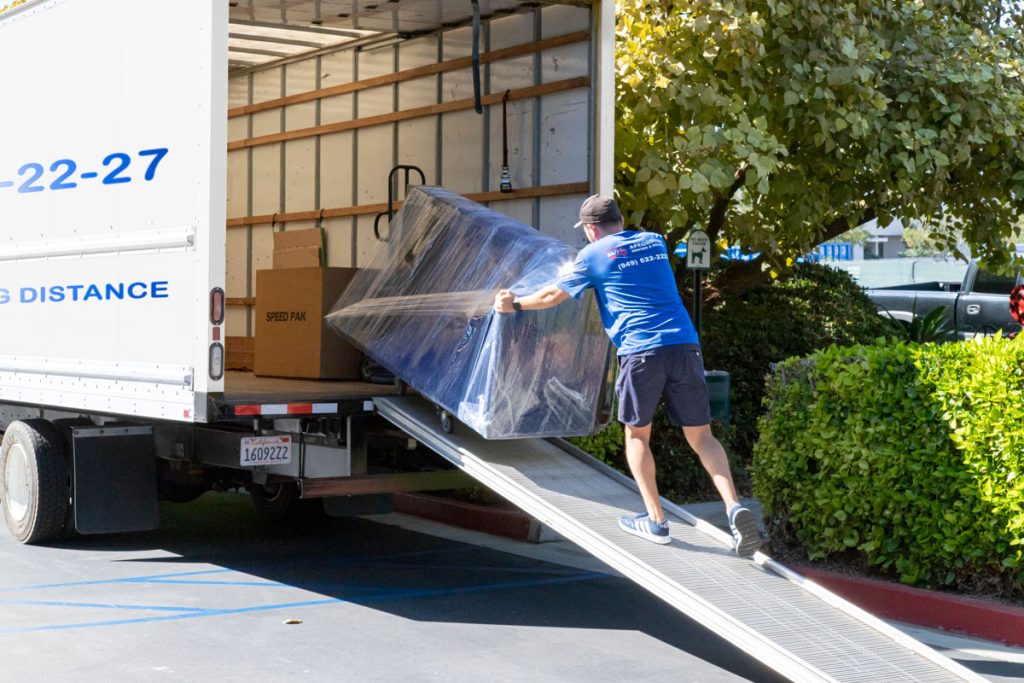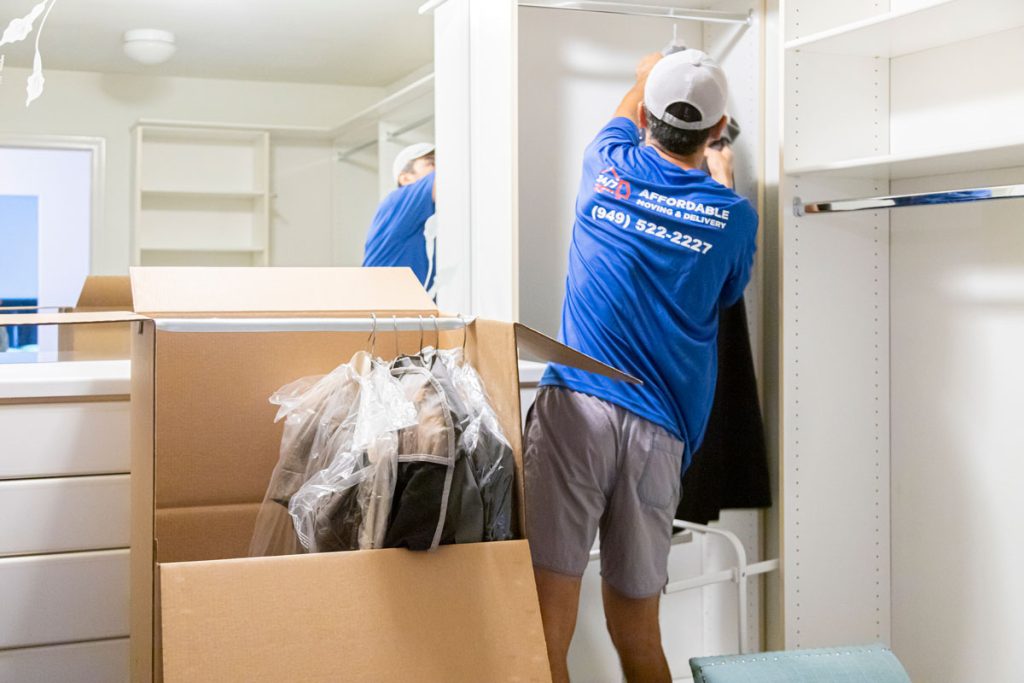5 Tips for Labeling Moving Boxes Like a Pro

Moving can be a stressful and chaotic experience, but proper labeling of your moving boxes can make the process much smoother. Whether you’re relocating to a new home or office, using an efficient labeling system is essential for keeping your belongings organized and ensuring a hassle-free transition. In this article, we’ll explore five expert tips to help you pack boxes for moving, ensuring that your items reach their destination safely and are easy to unpack.
Tip 1: Use a Consistent System
When it comes to labeling moving boxes like a pro, the first and most crucial tip is to establish a consistent labeling system. This system will be your guiding light throughout the moving process, ensuring that everything is organized, and items are easily identifiable:
- Choose a clear label format. The foundation of your labeling system is a clear and legible label format. Utilize large, bold letters in a font that’s easy to read, even from a distance. Avoid cursive or overly decorative fonts that can lead to confusion.
- Color-coding. Assign a specific color to each room or category of items. For instance, you might decide to use red for the kitchen, blue for the bedroom, and green for the living room. The color-coding system will be an instant visual cue for both you and your movers, making it easy to identify where each color box belongs.
- Numbering system. In addition to colors, consider implementing a numbering system. Assign a unique number to each box, allowing you to track them more efficiently. You can create a master list or use a mobile app to keep a digital record of the contents of each numbered box.
- Labels on all sides. To enhance visibility, place labels on at least two sides of each box. This way, labels remain visible, regardless of how the boxes are stacked or stored.
- Label placement. Consistently place labels on the same side or area of each label box for shipping, ensuring that they are easy to spot and read. For instance, you might choose to place labels on the upper-right corner of every box.
- Labeling materials. Invest in high-quality labeling materials that won’t easily smudge, fade, or peel off during transit. Waterproof labels or adhesive plastic sleeves can provide extra protection against the elements.
- Labeling station. Set up a dedicated labeling station with all your labeling supplies, such as markers, labels, and color-coding materials. This will help streamline the labeling process and reduce the chances of inconsistency.
- Involve everyone. If you’re moving with family members or roommates, ensure that everyone understands and follows the labeling system. Consistency among all participants is crucial to the system’s success.
By using a consistent labeling system, you’ll significantly reduce the chances of confusion, save time during both packing and unpacking, and ensure that your items end up in their intended places.
Tip 2: Include Essential Information
Creating a well-labeled moving box isn’t just about applying a consistent system. It’s equally important to include essential information on each label. Here’s how to include the vital details on your box labels:
- Room or destination. Clearly specify the room or destination in your new home or office where the box belongs. This is one of the fundamental aspects of your labeling system. Use clear and concise labels like “Kitchen,” “Master Bedroom,” or “Living Room.”
- Contents. Provide a brief but descriptive list of the box’s contents. Mention specific items or categories of items within the box. For example, you can label a box with “Kitchen Utensils” or “Bedroom Linens.” The more detailed you are, the easier it will be to locate items when you need them.
- Fragile items. If a box contains delicate or breakable items, it’s crucial to mark it as “Fragile.” Using this label will alert both you and your movers to handle the box with extra care to prevent damage.
- Special handling Instructions. Some items may require specific handling instructions to ensure they arrive intact. If any of your boxes need special care, like “This Side Up” or “Do Not Stack,” make these instructions clear on the label.
- Miscellaneous notes. Consider adding any additional notes that might be relevant, such as “Open First” for boxes containing essential items, or “Electronics — Keep Dry” for boxes with electronic equipment. These notes can be a lifesaver during the unpacking process.
Your movers will know exactly where to place each box, and you’ll be able to access your items without the frustration of opening multiple boxes to find what you need.
Tip 3: Color-Code for Easy Identification
Color coding adds an extra layer of organization to your labeling approach and simplifies the process for everyone involved.
- Assign colors to rooms or categories. Begin by assigning specific colors to different rooms or categories of items. For example, you can designate red for the kitchen, blue for the bedroom, green for the living room, and so on. Be consistent in your color choices and make sure everyone involved in the move understands the color code.
- Use colored labels or markers. Purchase colored labels, markers, or colored tape in the designated colors for each room or category. When labeling a box, apply the corresponding color to the label, either by using a colored marker or attaching a colored label or strip of tape.
- Apply colors to labels. To avoid confusion, include both the room/category label (e.g., “Kitchen”) and the corresponding color on the box label. This double coding makes it easier for movers, helpers, and yourself to quickly identify the destination of each box.
- Color-coding master list. Create a color-coding master list that associates each color with a room or category. This list should be readily accessible during the packing and unpacking process, ensuring that everyone is on the same page.
- Use color-coded floor plans. If possible, provide a color-coded floor plan of your new home or office to your movers. This visual aid will help them place boxes in the correct rooms quickly and efficiently.
- Digital color-coding. If you prefer a digital approach, you can use a mobile app or spreadsheet to keep track of your color-coded boxes. Include room or category names and corresponding colors for reference.
The benefits of a color-coding system are quick identification, streamlined unpacking, and stress reduction. By color-coding your moving boxes, you’ll make the entire process more intuitive, helping you and your team (or moving company) work together seamlessly.

Tip 4: Prioritize Boxes for Unpacking
To make the unpacking process more efficient and ensure that you have essential items readily available, it’s essential to prioritize your boxes. Here’s how to go about it:
- Priority 1 — immediate essentials. Label boxes that contain essential items you’ll need right away as “Priority 1.” These are the must-haves for the first day and night in your new location. Such boxes may include toiletries, a change of clothes, basic kitchenware, and important documents. Make sure these boxes are easily accessible during the move and have a distinctive “Priority 1” label.
- Priority 2 — first-week essentials. These could be cooking utensils, bedding, a coffee maker, and electronics. Labeling them as “Priority 2” helps you identify what to unpack shortly after moving in.
- Priority 3 — long-term or seasonal items. These boxes may contain seasonal items, decorations, books, or less frequently used belongings. You can tackle these boxes at your own pace once you’ve settled in.
Be sure to clearly mark the priority level on each box, preferably on multiple sides for easy visibility. A simple “Priority 1,” “Priority 2,” or “Priority 3” label is enough to distinguish them.
Tip 5: Maintain a Detailed Inventory
Keeping a record of what’s in each box helps you stay organized and ensures that nothing gets lost in transit. Here’s how to maintain a detailed inventory:
- Box number or name. This number or name will correspond to the box’s label and its contents, making it easy to cross-reference.
- Room or destination. Note the room or destination where the box belongs.
- Contents. List the contents of each box in detail. Be as specific as possible.
- Special handling instructions. If any box requires special handling, such as “Fragile” or “This Side Up,” include these instructions in your inventory.
- Cross-Check. As you pack each box, cross-check the items you’re placing inside with your inventory. This helps ensure that nothing is missed, and everything is properly documented.
While maintaining a detailed inventory does require some initial effort, it ultimately pays off by making your move more organized, efficient, and stress-free. This is truly the right way to organize moving boxes.
For more moving and packing tips, check out our services at My Affordable Move. We’re here to make your move as seamless as possible!

